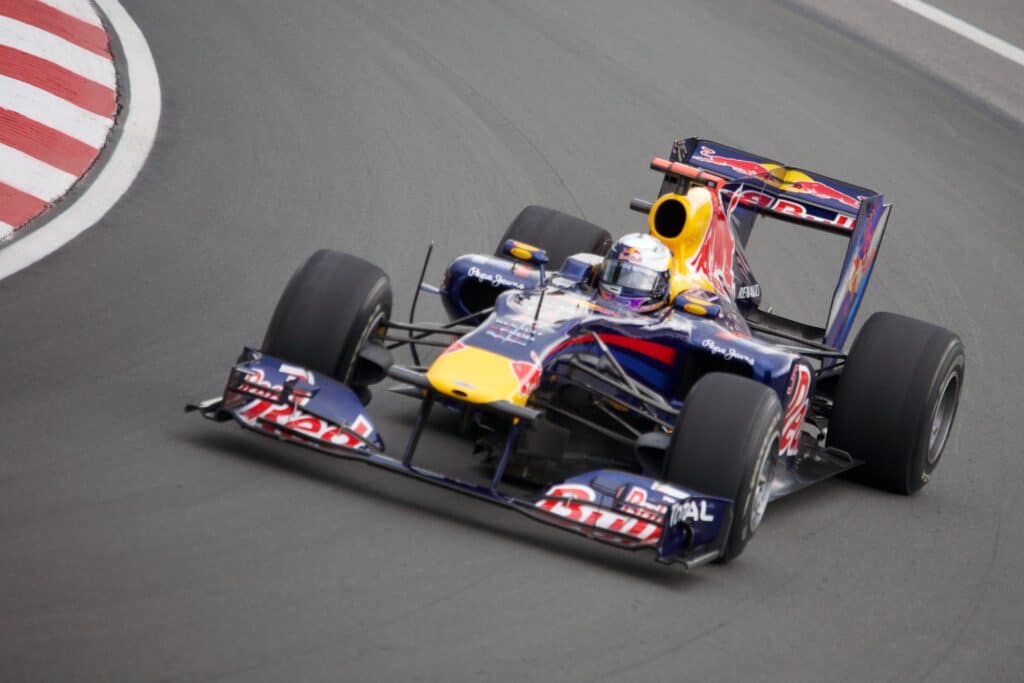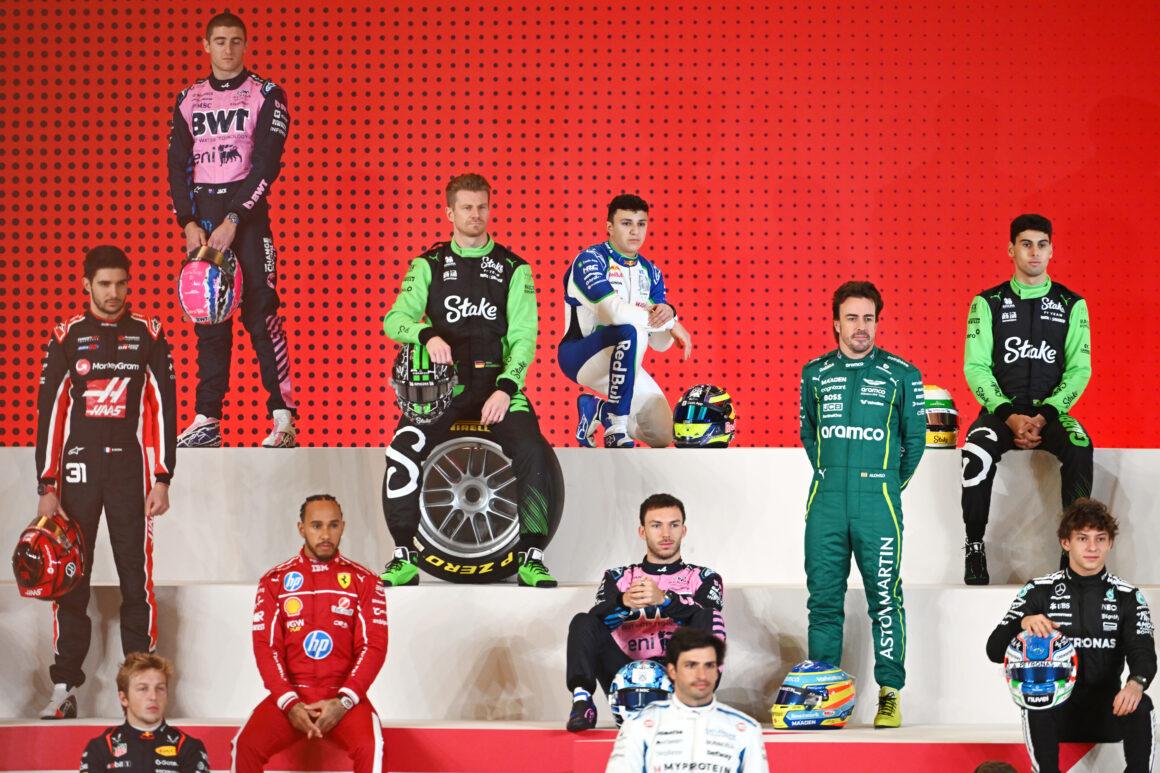Oversteer and understeer are fundamental concepts in Formula 1 that significantly impact a car’s handling characteristics.
Oversteer is the tendency for the rear of the vehicle to want to slide, which causes the rear to come around to the front during a turn. When a car experiences understeer, it has trouble turning into a corner because the front tires are losing grip.
Oversteer:
- Definition: Oversteer occurs when the back of the car wants to slide, leading to the rear of the car coming around to the front during a turn.
- Effect: This phenomenon can result in the steering wheel turning more than expected, causing the car to potentially drift or slide.
- Driver’s Preference: Some drivers, like Kimi Raikkonen, may prefer oversteer as it allows for more front-end grip and generates a dynamic driving experience.
Understeer:
- Definition: Understeer is when the front tires of the car lack grip during a turn, causing the car to have difficulty turning into a corner.
- Effect: Drivers experience understeer when they turn into a corner but find that the front tires do not grip as desired, leading to a wider turning radius.
- Driver’s Preference: Skilled drivers like Fernando Alonso may prefer understeer as it enables them to carry more speed through corners.
Impact on Performance:
- Handling: Oversteer is considered unstable but can help with corner entry speed, while understeer is more stable but can slow down a car.
- Optimization: Formula 1 engineers aim to minimize both oversteer and understeer as these characteristics can affect lap times and tire wear.
The Science Behind Understeer and Oversteer
The physics behind understeer and oversteer are complex, but at their core, they’re both about tire grip. When a car corners, the tires experience a lateral force that can cause them to lose grip. If the front tires lose grip first, the car understeers. If the rear tires lose grip first, the car oversteers.
Several factors can contribute to understeer and oversteer, including the car’s weight distribution, suspension setup, and aerodynamics. For example, a car with more weight over the front tires will be more prone to understeer, while a car with more weight over the rear tires will be more prone to oversteer.
Similarly, a car with a stiff front suspension and a soft rear suspension will tend to understeer, while a car with a soft front suspension and a stiff rear suspension will tend to oversteer.
Aerodynamics also play a crucial role. The downforce generated by a car’s wings and bodywork can significantly affect its grip levels.
For example, a car with a lot of front downforce and little rear downforce will be more prone to understeer, while a car with a lot of rear downforce and little front downforce will be more prone to oversteer.

The Impact of Understeer and Oversteer on F1 Performance
Understeer and oversteer can have a significant impact on a driver’s performance, lap times, and race results. As mentioned earlier, a slightly understeering car is generally faster than an oversteering one. This is because understeer is more predictable and easier to manage, allowing drivers to push the car to its limits with more confidence.
However, too much understeer can be detrimental to performance. It can make the car feel sluggish and unresponsive, making it difficult for the driver to maintain a good rhythm. On the other hand, while oversteer can be more challenging to manage, it can also be used to the driver’s advantage.
A car with a lot of oversteer can be very fast in the hands of a skilled driver, as it allows them to carry more speed through corners.
Factors Contributing to Understeer and Oversteer in F1
Several key factors can contribute to understeer and oversteer in Formula 1, including the car’s setup, the driver’s style, and the track condition :
- The car’s setup is perhaps : the car’s weight distribution, suspension setup, and aerodynamics can all affect its tendency to understeer or oversteer.
- The driver’s style :a driver who brakes hard and turns in sharply will be more likely to induce understeer, while a driver who turns in smoothly and uses the throttle to control the car’s rotation will be more likely to induce oversteer.
Similarly, a driver who is smooth and precise with their inputs will be less likely to induce understeer or oversteer than a driver who is aggressive and erratic. - Track conditions can also affect a car’s tendency to understeer or oversteer. For example, a track with a lot of high-speed corners will put more stress on the rear tires, making the car more prone to oversteer.
Similarly, a track with a lot of slow, tight corners will put more stress on the front tires, making the car more prone to understeer. The track surface can also play a role, with a slippery surface making the car more prone to both understeer and oversteer.

Mastering the Techniques to Handle Understeer and Oversteer
Managing understeer and oversteer is a crucial skill for any Formula 1 driver. There are several techniques that drivers can use to manage these situations during a race.
For example, to manage understeer, drivers can use techniques like trail braking, where they continue to brake as they turn into the corner. This helps to transfer more weight onto the front tires, increasing their grip and reducing understeer.
To manage oversteer, drivers can use throttle control. By carefully modulating the throttle, they can control the car’s rotation and prevent it from spinning out.
They can also use techniques like counter-steering, where they turn the steering wheel in the opposite direction to the slide, to help control the car’s rotation.
The Influence of Understeer and Oversteer on Tire Wear and Fuel Consumption
Understeer and oversteer can also have a significant impact on tire wear and fuel consumption. For example, understeer can increase tire wear on the front tires, as they are working harder to turn the car.
This can lead to increased pit stops and a slower overall race pace. Oversteer, on the other hand, can lead to uneven wear on the rear tires, which can also affect the car’s performance and require more frequent pit stops.
In terms of fuel consumption, both understeer and oversteer can increase fuel consumption, as the car is not running as efficiently as it could be. This can be a significant factor in a race, as Formula 1 cars have a limited amount of fuel they can use.
Teams must therefore carefully manage their fuel consumption to ensure they can complete the race without having to make an extra pit stop for fuel.


